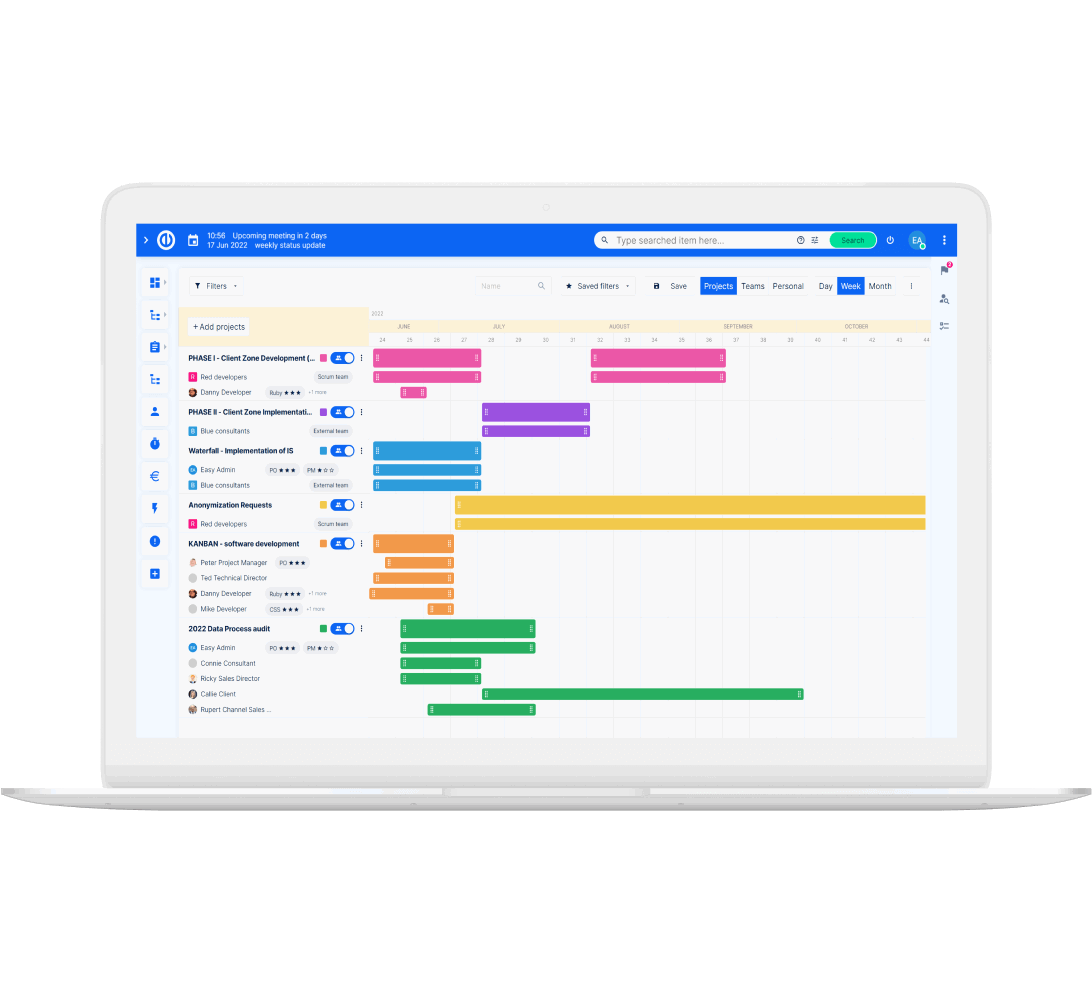How to Optimally Manage Agile Projects

What Is Agile Project Management and How Did It Originate?
The concept of agile methodology was first coined in 2001 and was originally manifested for software development, however, the mindset soon took off and what followed was its applicability across several industries, with the adoption rates of agile methodology continuing to rise across leading industries.
Getting into details about what Agile is, it is important to understand that agile isn’t just a methodology, but a mindset that can change the way projects are managed and perceived. The agile methodology calls for more effective and efficient work and allows evaluation and re-evaluation of the processes as well as the final outcome.
Using feedback from all the stakeholders, agile methodology pushes for consistent optimization and adaption, in accordance with the objective of the product/service that is being provided. Similarly, Agile project management focuses on well-informed decisions, originating from collaboration amongst all the stakeholders of a project.
Key Values of Agile Methodology
Agile Methodology emphasizes on continuous feedback-driven improvements to deliver value, and is inspired by 4 key values:
- Individuals and interactions over processes and tools.
- Working software over comprehensive documentation.
- Customer collaboration over contract negotiation.
- Responding to change over following a plan.
Benefits of Adopting Agile Methodology for Project Management
Agile project management has proved to be highly effective and has drastically increased the success rate of projects. The Project Management Institute published a report back in 2015, which states that “highly agile organizations have significantly better project outcomes compared to their counterparts with low agility”.
Their figures show that agile project management can increase the rate of projects meeting their business intent by 19%, with an overwhelming increase of 25% in the number of projects completed on time, and an increase of 22% in the number of projects that finished within budget.
Agile Project Management ultimately leads to greater flexibility within processes, better utilization of resources, improvement in collaboration and feedback mechanisms, and overall better adaptability of any project.
Steps to Implement Agile Project Management
There are multiple steps required for the successful implementation of Agile methodology.
- Begin by laying out a clear set of objectives and goals that the project would aim to achieve. It is important for every stakeholder in the project to have a clear sense of direction, in order for each of them to improve their productivity. Moreover, taking input from all of the key stakeholders of the project is also highly recommended before formulating and communicating the objectives.
- Secondly, you should ideally start working on a timeline, starting from the very first task in the backlog, ending at the anticipated successful completion of the project. Given that agility is the main inspiration, the timeline should be more goal-oriented. Such a timeline would help measure progress and make amends where required.
- Next, you should break the project into portions and tasks by defining sprints. This step is aligned with the core purpose of agile project management i.e. incremental and continuous improvement while addressing discrepancies along the way.
- The sprint retrospective is another important element that is at the foundation of agile project management and hence must not be ignored. Any room for potential improvement must be identified at the end of each sprint, to ensure that the processes get refined with the completion of each sprint.
- Once a project nears completion, it is important to make sure that continuous improvements along the way have been brought into effect and all of the project stakeholders are aware of the workings and progress of the project.
Implementation Frameworks for Agile
Effective implementation of Agile methodology requires the use of frameworks such as Scrum, Kanban, Lean (LN), and Extreme Programming (XP).
Scrum
Scrum is the most commonly used agile framework for implementing agile processes in developing, delivering, and sustaining projects. Scrum refers to the usage of iterative and incremental practices and is all about using short iterations, known as sprints, to tackle a set amount of work or a specific part of a project at a time. Through an integrated structure of short meetings, the designation of roles, and utilization of tools, scrum results in more effective and efficient project management.
This framework is highly suitable for complex projects that are result-oriented and are eager to cater to all project stakeholders. The structure usually includes a Scrum Master that is responsible for conducting efficient sprints that address the issue on the agenda and for getting updates on the progress.
A product owner sets the direction for a sprint by defining the goals and maintaining a ‘product backlog’, which states what needs to be achieved and delivered. Team members are the ones responsible for selecting items from the ‘product backlog’ and for the execution of work, which is supposed to be completed within a single sprint.
Then, feedback and reviews are collected towards the end of each sprint, from project stakeholders and the improvements are incorporated for the upcoming sprints. This continues until the last item in the ‘product backlog’ is completed.
Kanban
Kanban is another one of the leading frameworks that are used to implement the agile methodology, through visualization of workflow. The entire framework is built around a Kanban board, which enables digital visualization of the tasks and progress of a project. The most basic and commonly used Kanban board visualizes workflow in 3 steps: To-do, In Progress, and Done. A more complex Kanban board might also be employed where required.
Every task is represented by a single Kanban card, which is moved through the 3-steps on the Kanban board. This framework also relies on the presence of an updated backlog and the existence of efficient Work in progress (WIP) rules that define how work is handled, to help the team deliver.
Conclusion
Agile project management certainly is a useful approach towards improving the success rate of projects. While the benefits of this approach are often evident throughout the duration of the project, and at the completion, it is important to realize that it would not bring changes overnight, instead, it is a mindset that is focused on continuous improvement, making it an ongoing process.

Agile project management? Easy.
Get all powerful tools for perfect project planning, management, and control in one software.
